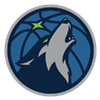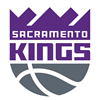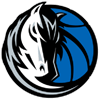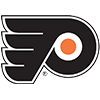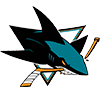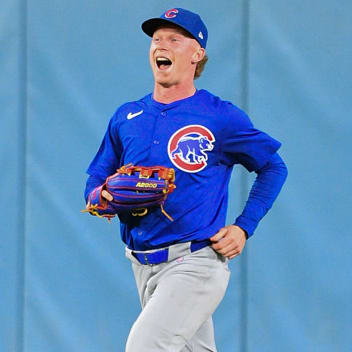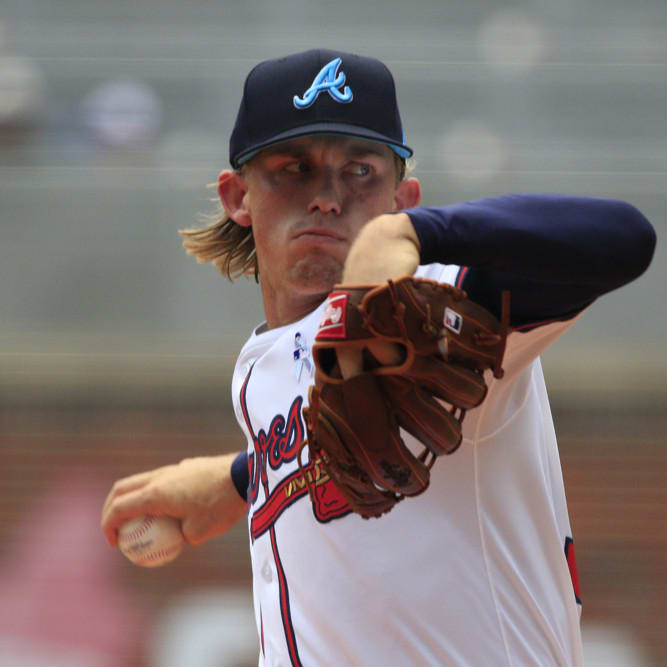The order of these rankings will inevitably change a lot between now and when most first-year player drafts are held in January/February. However, I know there are some of you who draft right away this summer, and those who play in open universe leagues might also find this useful.
I am breaking this initial set of rankings into tiers, and all of these tiers, including the top tier, are fluid heading into my update to the top 400 prospect rankings later this month (I'll be working to get it done ASAP, likely sometime next week). Within the tiers, I wouldn't try to talk you out of taking the last player in the tier as the first player from that tier.
With more cheating (hot bats, hot balls, potential video-related cheating at home games) happening in college baseball than ever before, what the college hitters do in their pro debuts will be at least as important as what they did in college with a metal bat. Any high school hitters from this class that go to Single-A this summer and produce will also get a nice vote of confidence in the rankings, as it's a weak class for prep hitting and performing against full-season pitching would be the top achievement to date on any of their resumes.
I'll be doing a mock FYPD with some fellow analysts on Wednesday's Prospect Podcast, and I'm excited to see how that goes, as I have no idea how the rest of the fantasy industry
The order of these rankings will inevitably change a lot between now and when most first-year player drafts are held in January/February. However, I know there are some of you who draft right away this summer, and those who play in open universe leagues might also find this useful.
I am breaking this initial set of rankings into tiers, and all of these tiers, including the top tier, are fluid heading into my update to the top 400 prospect rankings later this month (I'll be working to get it done ASAP, likely sometime next week). Within the tiers, I wouldn't try to talk you out of taking the last player in the tier as the first player from that tier.
With more cheating (hot bats, hot balls, potential video-related cheating at home games) happening in college baseball than ever before, what the college hitters do in their pro debuts will be at least as important as what they did in college with a metal bat. Any high school hitters from this class that go to Single-A this summer and produce will also get a nice vote of confidence in the rankings, as it's a weak class for prep hitting and performing against full-season pitching would be the top achievement to date on any of their resumes.
I'll be doing a mock FYPD with some fellow analysts on Wednesday's Prospect Podcast, and I'm excited to see how that goes, as I have no idea how the rest of the fantasy industry is approaching this class.
| Prospect | Team (Pick) | Positions | School | ETA | |
| 1 | Charlie Condon | COL (3) | LF/RF/3B | Georgia | 2025 |
| 2 | Travis Bazzana | CLE (1) | 2B | Oregon State | 2025 |
| 3 | JJ Wetherholt | STL (7) | 2B/SS | West Virginia | 2025 |
| 4 | Jac Caglianone | KC (6) | 1B | Florida | 2026 |
| 5 | Konnor Griffin | PIT (9) | CF/SS | Jackson Prep (MS) | 2027 |
| 6 | Theo Gillen | TB (18) | LF/2B | Westlake (TX) | 2027 |
| 7 | Bryce Rainer | DET (11) | SS/3B | Harvard-Westlake (CA) | 2027 |
| 8 | Ryan Waldschmidt | ARI (31) | LF/CF | Kentucky | 2026 |
| 9 | Cam Smith | CHC (14) | 3B/RF/1B | Florida State | 2026 |
| 10 | Braden Montgomery | BOS (12) | RF | Texas A&M | 2026 |
| 11 | Christian Moore | LAA (8) | 2B/LF | Tennessee | 2025 |
| 12 | Nick Kurtz | OAK (4) | 1B | Wake Forest | 2026 |
| 13 | Carson Benge | NYM (19) | RF/CF | Oklahoma State | 2026 |
| 14 | Kellon Lindsey | LAD (23) | 2B/SS/CF | Hardee (FL) | 2028 |
| 15 | Hagen Smith | CHW (5) | LHP | Arkansas | 2026 |
| 16 | Chase Burns | CIN (2) | RHP | Wake Forest | 2026 |
| 17 | Slade Caldwell | ARI (29) | CF/LF | Valley View (AR) | 2028 |
| 18 | Jurrangelo Cijntje | SEA (15) | BHP | Mississippi State | 2027 |
| 19 | Seaver King | WAS (10) | 3B/CF/LF/SS/2B | Wake Forest | 2026 |
| 20 | Cam Caminiti | ATL (24) | LHP | Saguaro (AZ) | 2029 |
| 21 | Trey Yesavage | TOR (20) | RHP | East Carolina | 2026 |
| 22 | Jonathan Santucci | NYM (46) | LHP | Duke | 2027 |
| 23 | Levi Sterling | PIT (37) | RHP | Notre Dame (CA) | 2028 |
| 24 | Braylon Doughty | CLE (36) | RHP | Chaparral (CA) | 2029 |
| 25 | Kash Mayfield | SD (25) | LHP | Elk City (OK) | 2029 |
| 26 | James Tibbs | SF (13) | LF/1B | Florida State | 2026 |
| 27 | Ryan Sloan | SEA (55) | RHP | York (IL) | 2028 |
| 28 | Kaelen Culpepper | MIN (21) | 3B/SS/2B | Kansas State | 2026 |
| 29 | Caleb Lomavita | WAS (39) | C | California | 2027 |
| 30 | Tommy White | OAK (40) | 1B/3B | Louisiana State | 2026 |
TIER ONE
1. Charlie Condon, LF/RF/3B, COL
Condon got to Georgia as a preferred walk-on and then his stock exploded after he red-shirted in 2022. The 6-foot-6, 216-pound corner outfielder had a 1.284 OPS and 25 home runs in 56 games in 2023 and followed that up with a .433/.556/.1.009 slash line and 37 home runs in 60 games this spring. He lowered his strikeout rate from 17.7 percent to 13.5 percent this season. Condon had a .648 OPS in 11 games in the Cape Cod League and an .840 OPS in 10 games with Team USA. He bats and throws right-handed, and while he has seen time at the infield corners, an outfield corner is his most likely landing spot in pro ball. It's possible Condon will provide a fantasy-neutral batting average, just due to his long levers and big cuts, but he could be an elite run producer in the majors during his peak years.
2. Travis Bazzana, 2B, CLE
A lefty-hitting second baseman from Australia who has lit up multiple stateside leagues during his collegiate career, Bazzana is a hyper-productive bat-first prospect. It's rare that college second baseman go this high in the draft, and that's for good reason. It's often a player type that has no projection remaining and if the bat isn't as good as hoped, there's no way for the player to still provide big-league value. Even so, it's worth noting Bazzana's recent exploits. He has added over 200 points of OPS to his ledger each year at Oregon State, culminating in a .407/.568/.911 slash line with 28 home runs, 16 steals on 21 attempts and a 12.5 percent strikeout rate in 60 games as a junior. Bazzana was also the best hitter in the Cape Cod League last summer (1.037 OPS in 33 games), showing that he can still do plenty of damage with a wood bat. The quality of pitching in the Pac-12 wasn't great, but he did what he could to convince evaluators that his bat will play at the highest level. Despite the fact he is a plus runner, reviews on his defense are mixed, and it will be critical that he clears the Tyler Black line in the field and doesn't slide to first base/designated hitter.
3. JJ Wetherholt, 2B/SS, STL
A hamstring issue limited Wetherholt to 36 games as a junior at West Virginia, but he has been extremely productive all three years in the Big 12 and during brief stints in summer leagues, including a .978 OPS in eight Cape Cod League games last summer. Wetherholt is a 5-foot-10 middle infielder who most scouts expect to end up at the keystone, but who has shown enough flashes at shortstop that he could be given a chance to stick there initially in pro ball. He is a plus runner and went 42-for-50 on stolen-base attempts over the past two seasons. His calling card, however, is a potential 70-grade hit tool that leads this draft class. The lefty-hitting Wetherholt's contact and strikeout rates have been elite en route to a career .370 average with the Mountaineers. He shows burgeoning power to all fields, tallying 24 homers in 91 games over the past two years, and profiles as a No. 2 hitter in the majors.
TIER TWO
4. Jac Caglianone, 1B, KC
While Caglianone was announced as a two-way player (first baseman, lefty pitcher), his avenue to providing fantasy value is as a slugging position player. In many ways, he's like the college version of Giants 2023 draftee Bryce Eldridge - he's talented enough to be developed as a pitcher in pro ball, but he'd be assigned to one level as a pitcher and a higher level as a hitter, so scrapping pitching feels inevitable. Caglianone is a power-over-hit prospect whose production has steadily improved over his three years at Florida. He is so strong that he can hit home runs out to all fields even when he doesn't fully square the ball up, and when he does square it up, he's capable of hitting it 500-plus feet with a metal bat. The 6-foot-5, 250-pound lefty slugger slashed .414/.536/.862 with 33 home runs and a 25:53 K:BB in 63 games as a junior, but he had a 58:17 K:BB in 71 games as a sophomore, and swing-and-miss/chase concerns will follow him until he sheds them in the upper minors.
5. Konnor Griffin, SS/CF, PIT
Griffin, the consensus top prep position player in this year's class, has four loud tools, while his hit tool is more of a question mark. A 6-foot-4, 215-pound righty hitter who plays a good shortstop and an even better center field, Griffin has 70-grade speed, a 70-grade arm and plus power that could tick up even more at his physical peak. He turned 18 in April, so he's on the younger side, and most sluggers who are as tall and as young as Griffin come with some hit tool risk. Projecting prep hit tools is one of the toughest tasks for amateur scouts, so there's not going to be much clarity on whether that's a clear weakness or a non-issue until the Mississippi high schooler gets to full-season ball. He has a very high ceiling as a 30/30 candidate whose defensive utility should keep him in the lineup every day.
6. Theo Gillen, LF/2B, TB
A prep infielder from Texas, Gillen needed shoulder surgery as a sophomore and dealt with a knee injury as a junior, but he has always had a great hit tool and he started to hit for power as a senior. The 6-foot-2 lefty hitter is a plus runner whose speed has been trending up and he projects for at least above-average power. It's a weak crop of prep hitting prospects, and Gillen might be the safest bet to hit, although his defense is more of a question. His below-average arm is a liability at any position, let alone shortstop, so the hope is that he can make it work in left field.
7. Bryce Rainer, SS/3B, DET
Once seen by some as a better prospect on the mound, Rainer showed up to his senior season for Harvard-Westlake with more strength and athleticism en route to solidifying his standing as one of the best prep position players in the class. The 6-foot-3 lefty-hitting shortstop showcases plus all-fields power potential and borderline plus speed. He should stick at shortstop for the foreseeable future, but if he did need to move to third base, his plus arm would allow him to handle the hot corner with ease. Scouts praise Rainer's hitting ability, and while he is generally considered to be power-over-hit, the expectation is that he'll hit for plus power with a decent average.
8. Ryan Waldschmidt, LF/CF, ARI
Waldschmidt has dealt with inopportune injuries as an amateur that led to him being lightly recruited in high school and only playing four games in the Cape Cod League last summer before tearing his left ACL. He made up for it this spring for Kentucky, showcasing all the tools that matter for fantasy, including plus power, a great combination of contact ability and strong swing decisions, and improving speed that has a chance to be another plus tool. Waldschmidt slashed .333/.469/.610 with 14 home runs, 25 steals and a 16.5 percent strikeout rate in 59 games as a junior. The big knock is that he's a below-average defensive outfielder with a below-average arm. Perhaps he could be fine eventually in left field thanks to his foot speed, but he will need to provide significant offensive value to play.
9. Cam Smith, 3B/RF/1B, CHC
Smith was among the top gainers in the country in both contact rate (70.6 percent to 82.1 percent) and 90th percentile exit velocity (106.5 mph to 111.3 mph) from 2023 to 2024 en route to rising up boards as a draft-eligible sophomore. A 6-foot-3, 225-pound brick house with big-league strength, Smith excelled over a large sample with a wood bat in the Cape Cod League last summer (.981 OPS, 12.8 K%), which is an important datapoint. Like most first-round college hitters, his 2024 numbers in this historic run-scoring environment were insane (.387/.488/.654 slash line, 14.9 K%). He has a plus arm but will be among the bigger third basemen in pro ball, so maintaining his conditioning will be important if he is to avoid moving to first base or an outfield corner.
10. Braden Montgomery, RF, BOS
Montgomery was a two-way player in 2022 and 2023 with Stanford, but he largely scrapped pitching to focus on developing as a right fielder after transferring to Texas A&M for his junior season. The 6-foot-2 switch hitter has monster power to all fields and a double-plus arm in the field, so it's a classic right field profile. He slashed .322/.454/.733 with 27 home runs in his first year in the SEC. His strikeout rates have been higher than the other hitters in contention to go in the top 5-to-10 picks, but he had an OPS over .830 with a wood bat in the Cape Cod League in 2022 and 2023, so his track record of producing in two college conferences and the top summer circuit are big marks in his favor. He suffered a broken leg on a play at the plate just weeks before the draft, so he may not make his pro debut until 2025. Montgomery only attempted eight steals in 75 games across his junior season and final year on the Cape, and he grades as an average runner, so home runs, RBI, runs and OBP are the top categories he could be a big positive in.
11. Christian Moore, 2B/LF, LAA
Moore's 111.8 mph 90th percentile exit velocity was second among college position players in the draft behind only Charlie Condon, and he beat out Condon for the SEC triple crown. Bigger and stronger than the average second base prospect, Moore measures in at 6-foot-1, 210 pounds and is an average runner who figures to slow down into his mid-to-late 20s. He improved his contact rate more than any other draft prospect, going from 65 percent in 2023 to 77 percent this year, and his strikeout (14.2 percent) and chase (24 percent) rates were good for a player who hit 33 home runs in 71 games. He didn't make enough contact each of his first two seasons at Tennessee, and his .497 OPS with a 33.7 percent strikeout rate in the Cape Cod League in 2022 is a slight red flag, although he was an underclassman. However, after his monster junior season that culminated in a College World Series title, there will be plenty of excitement for Moore in dynasty leagues.
12. Nick Kurtz, 1B, OAK
Being an elite college first baseman doesn't guarantee significant success at the highest level (see Spencer Torkelson, Andrew Vaughn, etc...) but Kurtz's college track record is very impressive. A 6-foot-6 lefty who walked more than he struck out all three years at Wake Forest and led the nation with 78 walks as a junior, Kurtz is a good defender in addition to his offensive exploits. He took advantage of the Demon Deacons' hitter-friendly home park en route to blasting 46 home runs in 110 games over the last two years. Kurtz has good bat speed and has registered elite exit velocities with a metal bat, but his 16.2 percent strikeout rate as a junior is just OK for a top pick from college.
TIER THREE
13. Carson Benge, RF/CF, NYM
A two-way player who missed his freshman season at Oklahoma State while recovering from Tommy John surgery, Benge's future in pro ball is likely as an outfielder whose big arm is a weapon in the field. There are some moving parts in his left-handed swing, but his contact and chase rates were strong while his 16.8 percent strikeout rate was acceptable. At 6-foot-1, 184 pounds, Benge isn't very big, but he has a fast bat and a knack for getting the ball in the air. He hit 18 home runs this spring after hitting seven long balls in 2023. His .838 OPS last summer in the Cape Cod League was strong, but he had a 21.2 percent strikeout rate with just one extra-base hit (a triple) in nine games. Benge is an average runner who should be an above-average right fielder. There could be another level for him to reach once he is 100 percent focused on hitting and is able to potentially add some more muscle to his wiry frame.
14. Kellon Lindsey, 2B/SS/CF, LAD
Lindsey gave up football a year ago and has risen up boards this spring as arguably the best prep shortstop in the class. His top tool is borderline 80-grade speed, while his below-average raw power is the weakest part of his game. At 6-foot-2, 175 pounds, Lindsey has room to fill out his frame and he's already shown more power this spring than in the past, so perhaps he can be a double-digit homer threat in time to go with a potentially above-average hit tool. He may need to move to second base eventually, as his average arm is a little light for the six, but he could be a plus defender at the keystone.
15. Hagen Smith, LHP, CHW
Smith struck out 48.6 percent of batters faced as a junior for Arkansas, separating himself as the best lefty in the class and the pitcher with the highest ceiling in the draft. He had Tommy John surgery as a sophomore in high school, so if he ends up needing a second such procedure, it could come earlier in his career than it does for most pitchers who get a second TJS. Smith entered his junior year with questionable control after walking 13.5 percent of batters as a sophomore and 13.3 percent of batters as a freshman. The 6-foot-3, 225-pound southpaw cut his walk rate to 10.3 percent as a junior, which is still higher than we'd like to see from a premium college pitching prospect. Smith's stuff is so good that many evaluators are willing to look past his questionable command projection. His fastball has been up to 100 mph and sits in the mid-90s, while his mid-80s sweeper is at least a plus pitch and plays up even more due to Smith's deceptive crossfire delivery. He also has a 17-strikeout performance against Oregon State on his 2024 resume that required just 78 pitches and qualifies as one of the best outings from any college starter in recent memory. There's bullpen risk with Smith, and we should get a good idea pretty early on in his pro career if he's got the accuracy to project as a frontline starter.
16. Chase Burns, RHP, CIN
Burns was touching triple digits as an amateur but made it to campus at Tennessee and eventually transferred to Wake Forest for his junior season. He logged a 7.7 percent walk rate this year, which is a mark in line with a typical premium college starting pitching prospect, and his elite 48.8 percent strikeout rate just barely edged out Hagen Smith of Arkansas. Burns hasn't had any notable arm injuries or surgeries, which is a bit surprising given how long he's been throwing this hard. In addition to his fairly straight upper-90s fastball (touches 102 mph), Burns has a monster upper-80s slider that is one of the best pitches in the class. His curveball is also a plus pitch, and his seldom-used changeup will flash plus. There's a chance big-league hitters are able to tag his fastball more often than its velocity would portend, but there are no obvious concerns here beyond the fact that pitchers who throw this hard often need Tommy John surgery early in their careers.
17. Slade Caldwell, CF/LF, ARI
Caldwell has a chance to impact the game on both sides of the ball thanks to plus-plus speed on the bases and in the field to go with premium bat speed at the dish. Despite a compact 5-foot-9, 180-pound frame, Caldwell takes big hacks and takes advantage of his smaller strike zone. The lefty-hitting prep center fielder out of Arkansas has drawn some comparisons to Mets prospect Jett Williams, although Williams was an even more prolific performer in high school than Caldwell. His fringe arm is his weakest tool, but he could still end up covering enough ground to be a plus defender up the middle.
18. Jurrangelo Cijntje, BHP, SEA
Cijntje is a natural lefty, but started throwing right-handed as a child to emulate his father in the Netherlands, and is considered a both-handed pitcher entering the draft. The 5-foot-11, 200-pound hurler started throwing as a righty against lefty hitters more this season for Mississippi State, and most evaluators would like to see him work full-time as a righty. He logged a 3.67 ERA, 1.10 WHIP and 113 strikeouts in 90.2 innings this spring while sporting a 7.9 percent walk rate. As a righty, Cijntje's fastball sits in the mid-90s and touches 98 mph. His hard slider is his best secondary offering.
TIER FOUR
19. Seaver King, 3B/CF/LF/SS/2B, WAS
A jack-of-all-trades who transferred from Division II to Wake Forest for his junior season, King can play multiple positions while utilizing plus speed in the field and on the bases. King is a quick-twitch athlete with a fast bat, but his ability to put most balls in play could work against him, as he'll enter pro ball with a very aggressive approach. He uses all fields and took advantage of the cozy home confines at Wake Forest to notch a career-best 16 home runs in 60 games. Perhaps his top datapoint when factoring in context is the 1.021 OPS and 12.7 percent strikeout rate he logged in 16 games with a wood bat last summer in the Cape Cod League. He played double-digit games at third base, center field and shortstop this year, and considering he doesn't project to be plus at any one position, it might make the most sense to lean into his versatility and keep moving him around, a la Matt Vierling or Tommy Edman.
20. Cam Caminiti, LHP, ATL
A nephew of former big-league third baseman Ken Caminiti, Cam reclassified to be part of the 2024 class and doesn't turn 18 until August. The 6-foot-2 southpaw sits 93-95 mph with his fastball (touches 98 mph) while mixing in potentially above-average offerings in his slider and changeup. His fastball is easily his best pitch, due to good movement that elicits whiffs in the zone. Caminiti was a quality center fielder in high school, so he's pretty athletic, which scouts hope will allow him to develop starter-level command.
21. Trey Yesavage, RHP, TOR
A 6-foot-4, 225-pound righty out of East Carolina, Yesavage is one of the younger college starters in the class, as he turns 21 later this month. He logged an 8.9 percent walk rate this year after walking 7.4 percent of batters faced as a sophomore, but the rest of his stats ticked up in his final year with the Pirates, including a career-high 93.1 innings. His 93-95 mph fastball touches 98 mph, while his mid-80s slider/cutter is arguably his best pitch. Yesavage has a complete four-pitch mix, with his changeup and curveball grading as at least average offerings. His stuff could tick up in pro ball, but as things stand, Yesavage looks like a potential mid-rotation starter, assuming he throws enough strikes.
22. Jonathan Santucci, LHP, NYM
Santucci had surgery to remove bone chips in his elbow midway through his sophomore season at Duke and was also impacted by a rib injury as a junior. Amid the injuries, the 6-foot-2 southpaw tallied 140 strikeouts and 52 walks in 87.1 innings across his final two seasons, illustrating his ability to miss bats at a high clip and his shaky control. He has a modern fastball in the 92-96 mph range and his low-80s slider is a second plus offering. Santucci's changeup also shows promise, so it will be his durability and command/control that determines whether he makes it as a big-league starter.
23. Levi Sterling, RHP, PIT
One of the most projectable prep pitchers in this year's class, Sterling was a two-way player at his California high school, but the 6-foot-5 righty has more upside on the mound than in the field. His delivery is easy and athletic, and the assumption is that his low-90s fastball will tick up a couple notches at maturity. Sterling is adept at spinning the ball, with his low-80s curveball and mid-80s slider each showing plus potential. He doesn't turn 18 until September, which is a big mark in his favor, and his athleticism portends starter-level control.
24. Braylon Doughty, RHP, CLE
Doughty is a 6-foot-1 hard-throwing righty who went to high school in California. His fastball is already a mid-90s offering and he is adept at spinning a powerful low-80s curveball and a a low-80s sweeper. He is a good athlete and should be able to throw enough strikes to start. There could be upwards of three plus pitches in Doughty's repertoire in time, so there's a high ceiling here to go with the inherent risk that comes with all prep pitching prospects.
25. Kash Mayfield, LHP, SD
The two main quibbles with Mayfield are unrelated to his stuff or control: he took last summer off so pro teams didn't get to see him face the best competition on the showcase circuit and he is one of the older high schoolers in the class, having turned 19 in February. Other than those two factors, there's a lot to like. The 6-foot-4 lefty has a great fastball/changeup combination, with his heater ticking up into the mid-90s at times this spring, and his changeup grading as one of the better ones in the entire class. His breaking ball is still a work in progress and his control should be good enough to start.
26. James Tibbs, LF/1B, SF
His exit velocities aren't up there with the elite sluggers in this class, but Tibbs is one of the best pure hitters in the draft. The stocky bat-first player had an 11.6 percent strikeout rate, an 80.5 percent contact rate and a 19.4 percent chase rate as a junior, which are all high-end marks relative to his peers. He walloped 28 home runs with a .363 average and a .488 on-base percentage as a junior at Florida State, and his .862 OPS with six home runs in 40 games in the Cape Cod League last summer shows he can produce with a wood bat. Tibbs' offense will need to be as good as advertised in pro ball, as the 6-foot, 200-pound lefty hitter is limited to left field and first base, and he could be mediocre even at those spots.
27. Ryan Sloan, RHP, SEA
Sloan has great size (6-foot-5, 220 pounds) and stuff, with a chance for three plus pitches in time. The prep righty out of Illinois sits in the mid-90s with his fastball and boasts one of the best changeups from the high school ranks while mixing in a quality low-80s sweeper. He excelled last summer on the showcase circuit and is committed to Wake Forest, but he finds himself a great landing spot with Seattle.
TIER FIVE
28. Kaelen Culpepper, 3B/SS/2B, MIN
Culpepper is more floor than ceiling, as he has a strong hit tool and could hold his own defensively at any infield position, but he lacks impactful power or speed. The righty-hitting infielder has hit for a very high average in short stints with Team USA and in multiple college postseason runs. He slashed .328/.419/.574 with 11 home runs and 17 steals in 61 games this spring for Kansas State. Culpepper has a flat swing and had zero home runs with three doubles in 17 Cape Cod League games last summer and hit 26 homers in 152 games for KSU. His stolen-base totals are the product of opportunistic reads more than pure speed, as he is just a 50-grade runner. Third base would be his most obvious home if not for his lack of power, and he may eventually move around the diamond as needed in a super-utility role.
29. Caleb Lomavita, C, WAS
Lomavita had an excellent showing with a wood bat in the Cape Cod League in back-to-back summers, hitting .316 as an underclassman in 2022 and slashing .329/.374/.494 with three home runs and a 17.3 percent strikeout rate last summer. He has always had an aggressive approach, and that was apparent this spring for Cal, as he had a 16.7 percent strikeout rate and a 4.7 percent walk rate while hitting .322 with 15 home runs in 55 games. Lomavita is a good athlete for a catcher, and stole 12 bases on 16 tries as a junior. He is still working on his defense behind the plate, and could handle third base or a corner outfield spot if his defense never catches up to his offense. As things stand, he is more appealing in batting average leagues than OBP leagues.
30. Tommy White, 1B/3B, OAK
The aptly nicknamed Tommy Tanks hit 24-plus home runs in each college season, finishing with 75 long balls in 187 career games. His .330 average and .401 OBP as an LSU junior were his worst marks to date, but his 12.1 percent strikeout rate was his best such mark. Granted, his 32 percent chase rate was the second-worst mark (behind Jac Caglianone) among likely first-round college hitters, so White will be considered power-over-hit until further notice. He's an impatient, high-contact hitter, which isn't a common profile for a highly-touted college slugger. Similarly to another highly-touted LSU hitter from a couple years ago, Jacob Berry, White will need to really produce at the plate, as he is a poor athlete and defender who should end up at first base/designated hitter.












